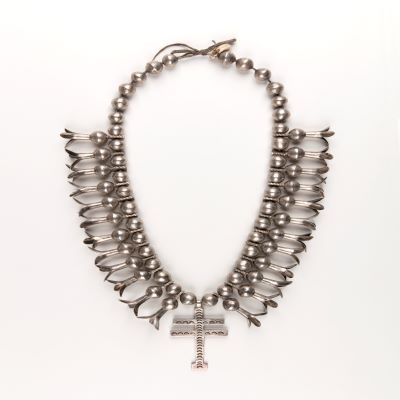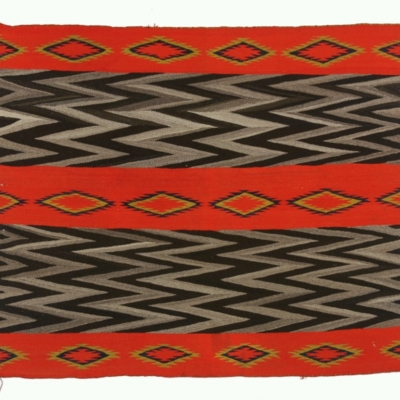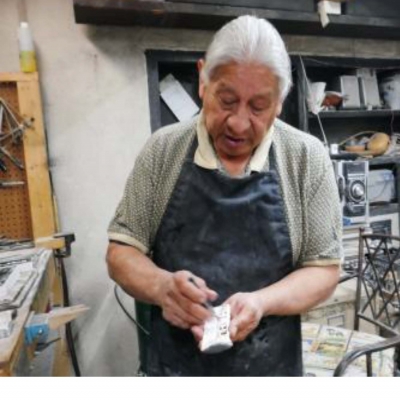Current Exhibitions
Turquoise, Water, Sky: The Stone and Its Meaning
April 13, 2014 through May 30, 2016
Turquoise, Water, Sky: The Stone and Its Meaning highlights the Museum’s extensive collection of Southwestern turquoise jewelry and presents all aspects of the stone, from geology, mining and history, to questions of authenticity and value.
People in the Southwest have used turquoise for jewelry and ceremonial purposes and traded valuable stones both within and outside the region for over a thousand years. Turquoise, Water, Sky presents hundreds of necklaces, bracelets, belts, rings, earrings, silver boxes and other objects illustrating how the stone was used and its deep significance to the people of the region. This comprehensive consideration of the stone runs through May 2, 2016.
View the online version of the exhibition at http://turquoise.indianartsandculture.org
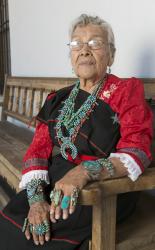
Turquoise-Color and Meaning
Color and Meaning
While the exact meaning of turquoise differs for the various Native peoples in the region, it symbolizes aspects of a good life for all of them. For Pueblo groups, blue/green means water, sky, health and plenty. Josephine Humetewa is wearing three necklaces, including a Zuni-made squash blossom (Cat# 56591/12, 14” by 10”) and a Pueblo bead necklace made of turquoise and shell (Cat# 50262/12, 11.5” by 9”). Bracelets are all Navajo-made (Cats # 44186/12, 38138/12, 10610/12, and 10229/12; each approximately 3 inches wide), except for the multiple row bracelet (Cat# 56786/12, 2.5” by 1.75”), which is Zuni in origin. Likewise the rings are Pueblo- (Cat # 57103/12), Zuni (Cat # 36071/12), or Navajo-made (Cats # 40661/12, 57290/12, 40659/12, 10146/12) and range from one to two inches long. Her pin (Cat # 48140/12) is Zuni needlepoint and 1.5 inches long and wide.
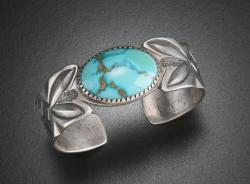
BRACELET
Bracelet, 1920–30, Navajo. Silver, Fox Mine turquoise. Museum of Indian Arts and Culture/Laboratory of Anthropology (10189). Photograph by Blair Clark.
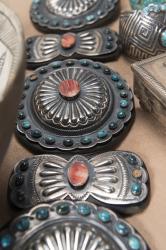
Concho Belt
A concho belt is both functional and ornamental, made of leather with round or oval silver decorations embellished with turquoise and sometimes coral. The belt’s name derives from the Spanish word conchas (shells, referring to the silver belt decorations). Traditionally these belts are made by the Zuni and the Diné (Navajo).
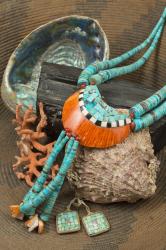
Turquoise’s Companions
Turquoise’s Companions
Many of the materials that accompany turquoise on southwestern jewelry come from oceans, reinforcing the water symbolism of turquoise. Here the raw materials are shown beside jewelry made from them. Raw materials are jet (Cat # 40885/12, 7” by 3.5 inches); abalone (Cat # 36751/12, 5” by 6.5”); spiny oyster or Spondylus sp. shell (Cat# 57795/12, 5” by 5”); and coral (Cat# 57808/12, 4” wide by 3” long). The earrings (Cat#36134/12a,b, 1.1” by 1.3” each) were made by Hopi artist Talaqumptewa and are made of cottonwood, turquoise, abalone, and cotton cordage . The necklace (Cat # 57080/12, 17”long) was made in Santo Domingo Pueblo of turquoise, coral, jet, spiny oyster, mother-of-pearl, silver, and fiber.

